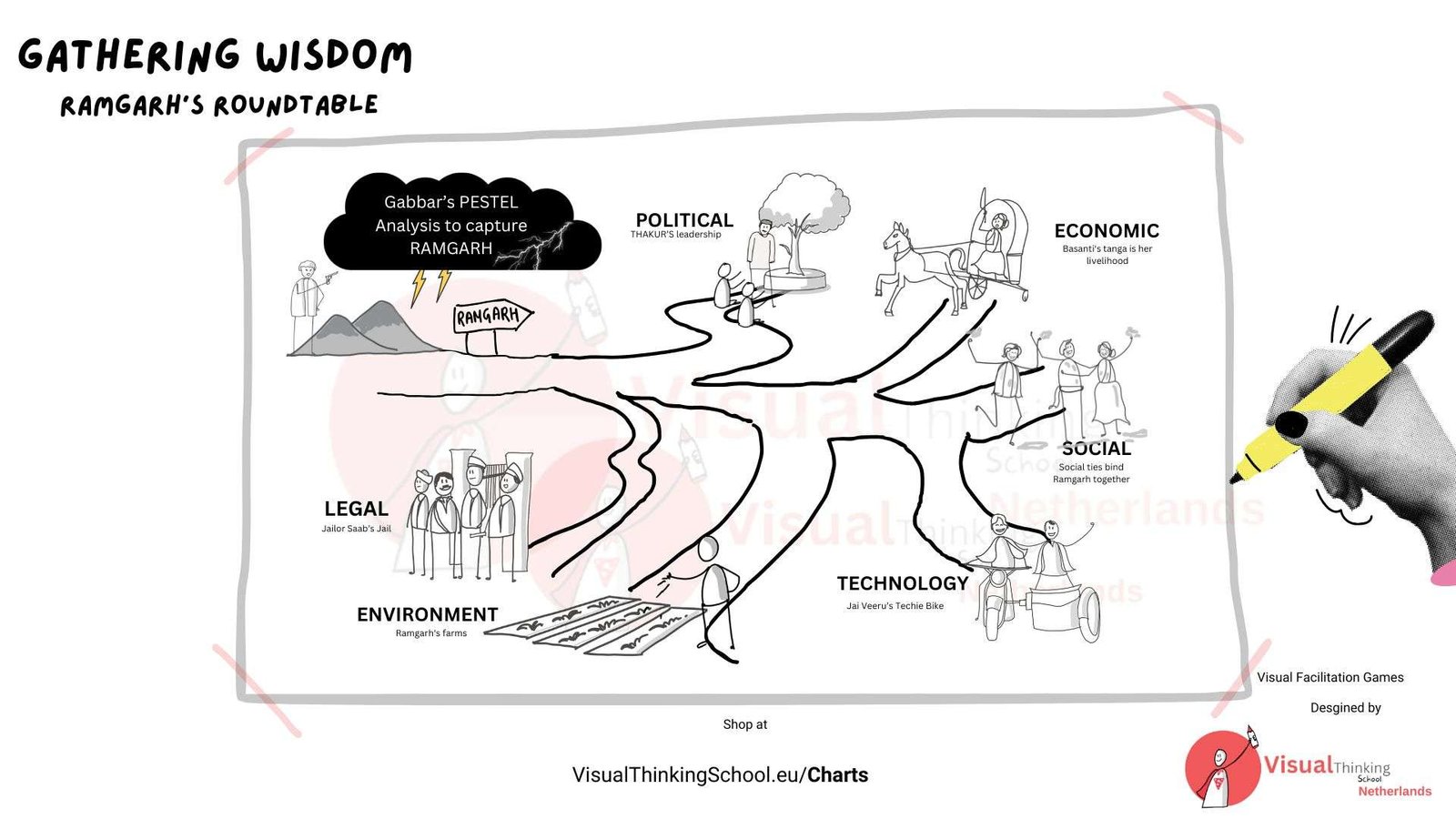
Ramgarh’s roundtable a facilitation game
Ramgarh’s Roundtable is a collaborative facilitation game where participants explore the six key domains that shape a community or project: Economy, Social, Technology, Legal, Environment, and Politics. Inspired by the vibrant metaphor of Ramgarh village life, this exercise brings a visual and interactive approach to analyzing the importance and challenges associated with each area. Participants will use various game elements to contribute ideas, prioritize tasks, and create a well-rounded action plan.

Use Ramgarh’s Roundtable:
This game offers a fun and engaging approach to ensure all areas of a project are thoughtfully considered before making decisions.
You can purchase this chart and other facilitation materials at Visual Thinking School Charts.
Objective: Participants brainstorm ideas relevant to each of the six domains represented in Ramgarh village.
Game Mechanics:
This phase encourages everyone to reflect on how each area contributes to the overall goals of the project or initiative.
Objective: Groups present their ideas for feedback and add new insights.
Game Mechanics:
For more guidance on prioritization strategies, see this effective brainstorming.
Objective: Prioritize which ideas should move forward in each domain.
Game Mechanics:
This phase ensures the team’s priorities reflect a collective decision, maximizing the feasibility and impact of each choice.
Objective: Outline an action plan for implementing the prioritized ideas across each domain.
Game Mechanics:
This action plan serves as a roadmap, guiding the team on how to bring their collaborative vision for each domain to life.
For more details on how to incorporate effective planning into facilitation, check out our Visual Facilitation Certification Course.
Objective: Reflect on the process and insights gained.
Game Mechanics:
Ramgarh’s Roundtable brings participants together to thoughtfully consider how every area contributes to a project or community’s holistic success. By using a blend of metaphor, prioritization tools, and collaboration, teams are equipped to create actionable plans that acknowledge economic, social, technological, legal, environmental, and political needs. For those interested in expanding their toolkit for visual facilitation, you can purchase our Ramgarh’s Roundtable Template at Visual Thinking School Charts and explore our Visual Facilitation Certification Course to deepen your facilitation skills.
This exercise is not only a way to organize priorities but also an enjoyable experience that reinforces the value of balance across multiple domains when building successful projects.

Piyuesh is the founder of Visual Thinking School, Netherlands. He is passionate about empowering organizations and classrooms with Visual Thinking Skills. He conducts trainings onBusiness Sketchnotes™ , Classroom Sketchnotes™, Visual Business Storytelling™, Graphic Facilitation™
In his free time, piyuesh likes practicing Aerial Yoga, Acro yoga, Krav Maga and Pole workouts.